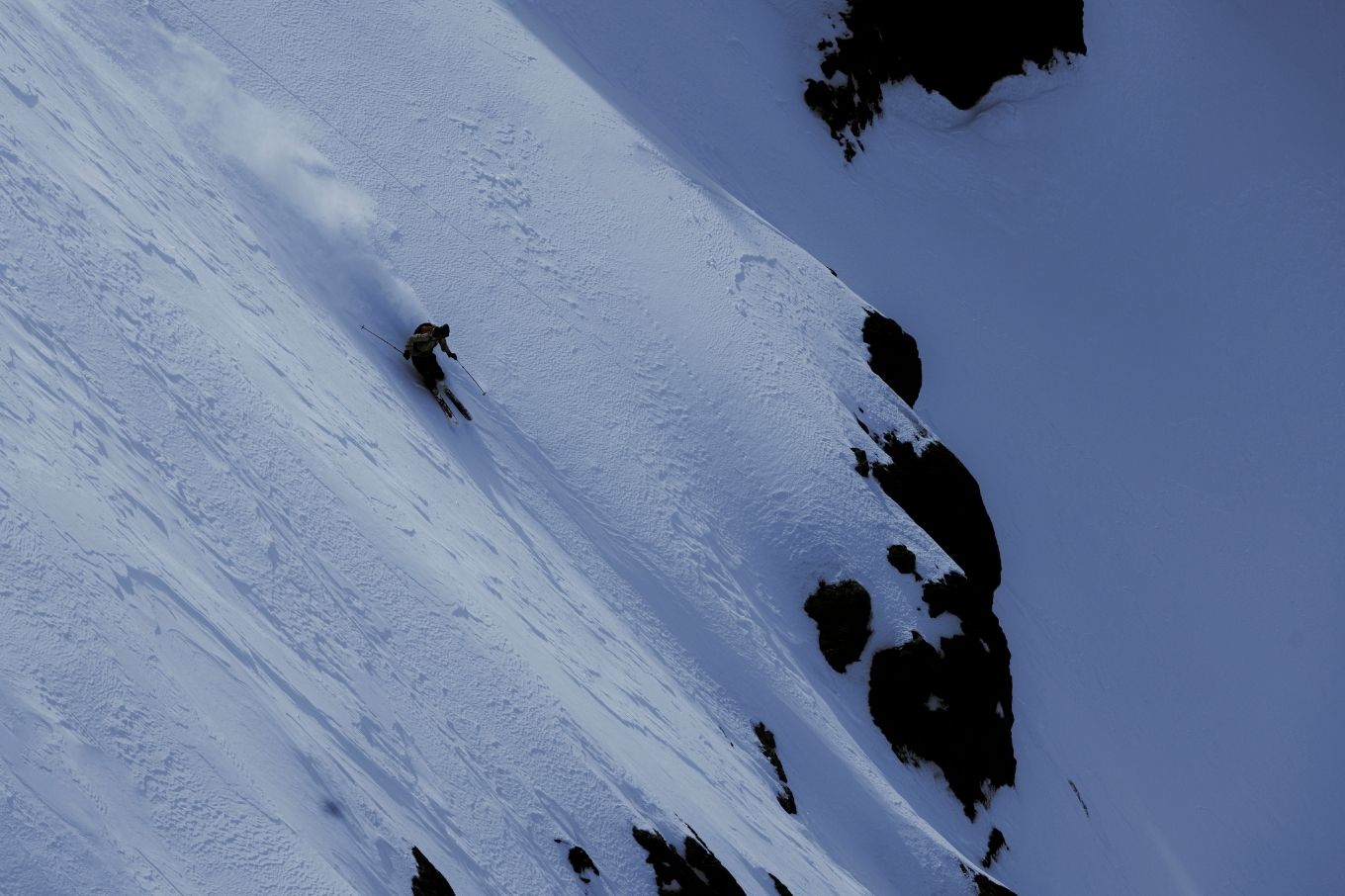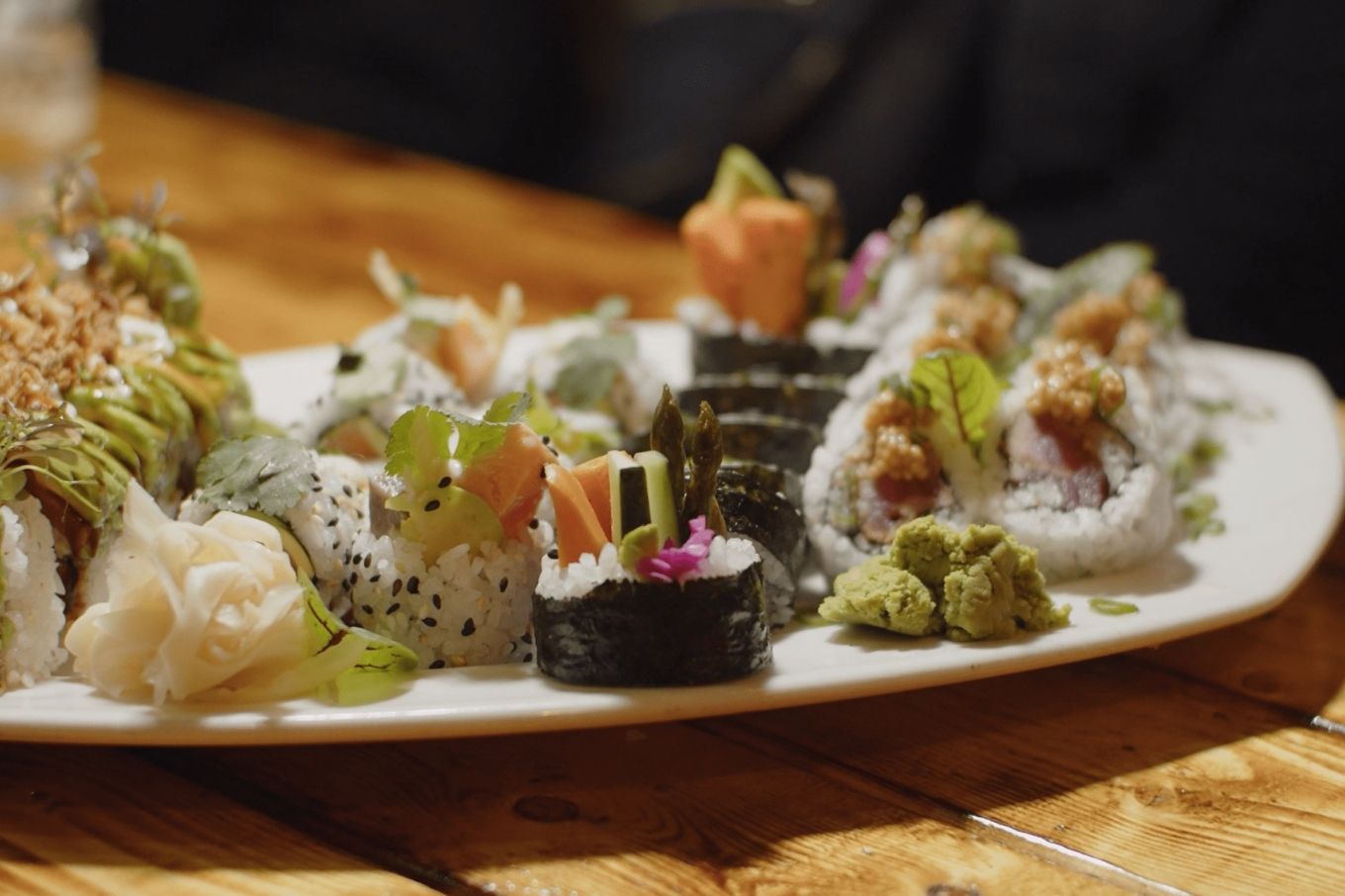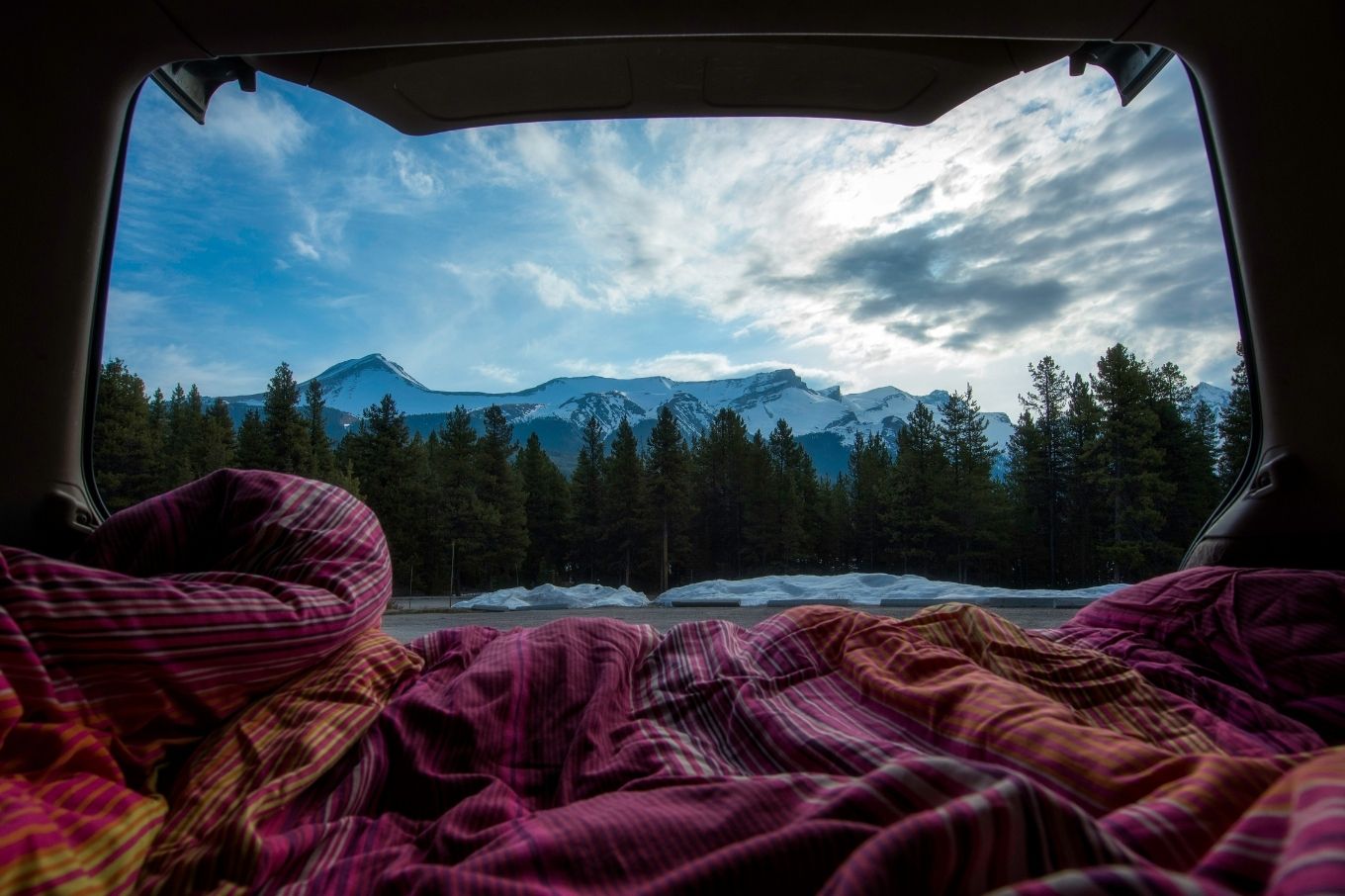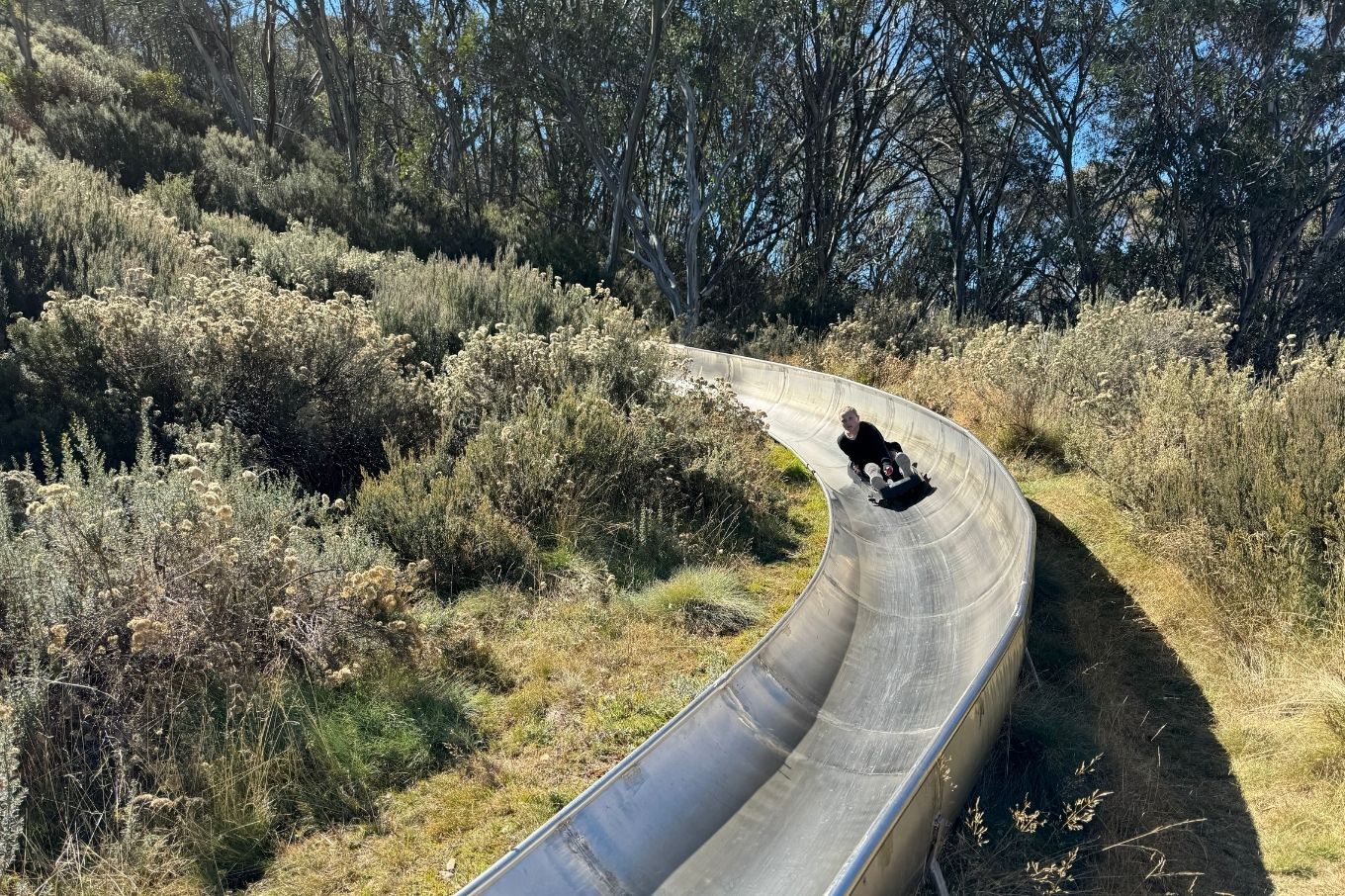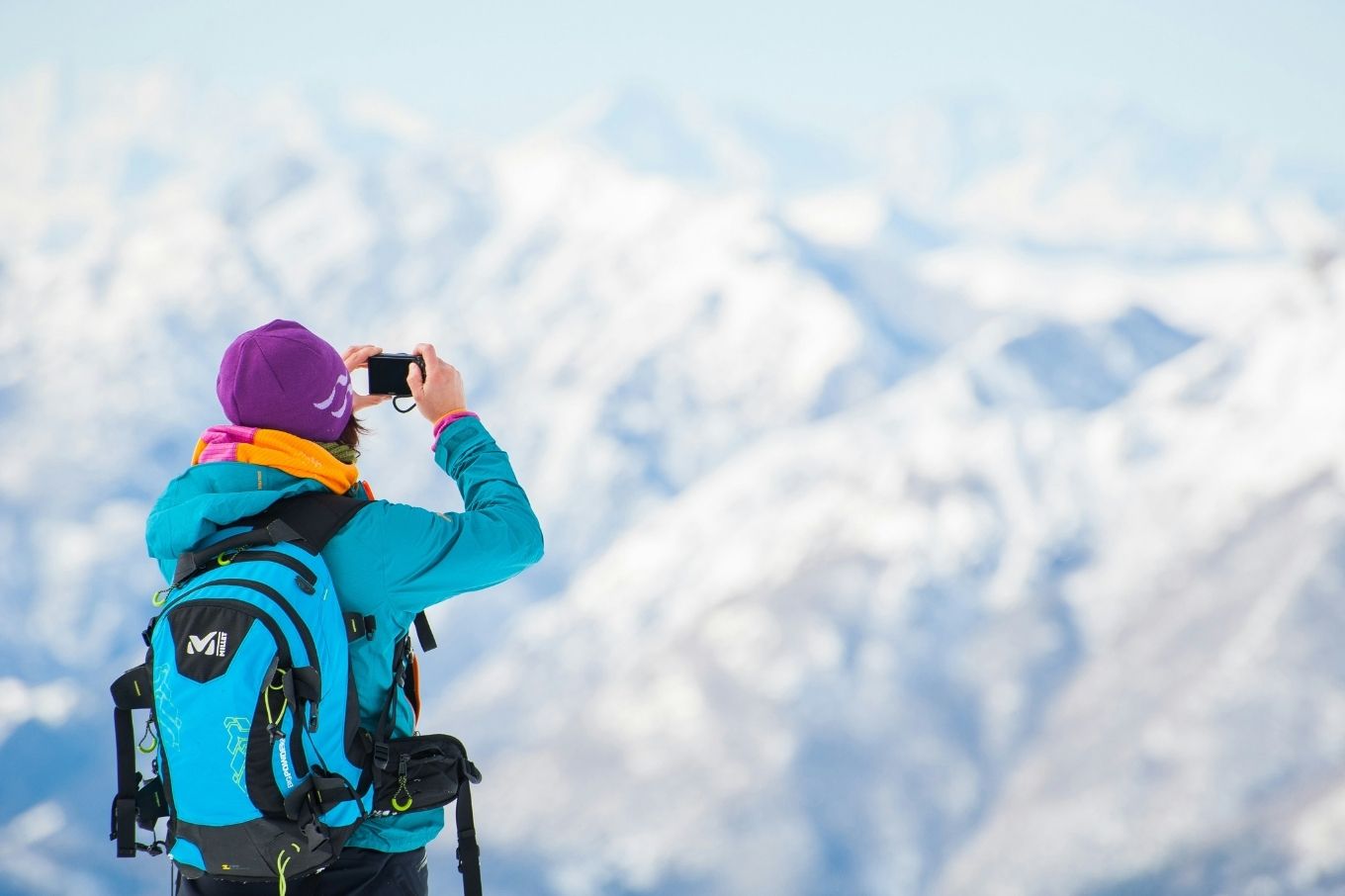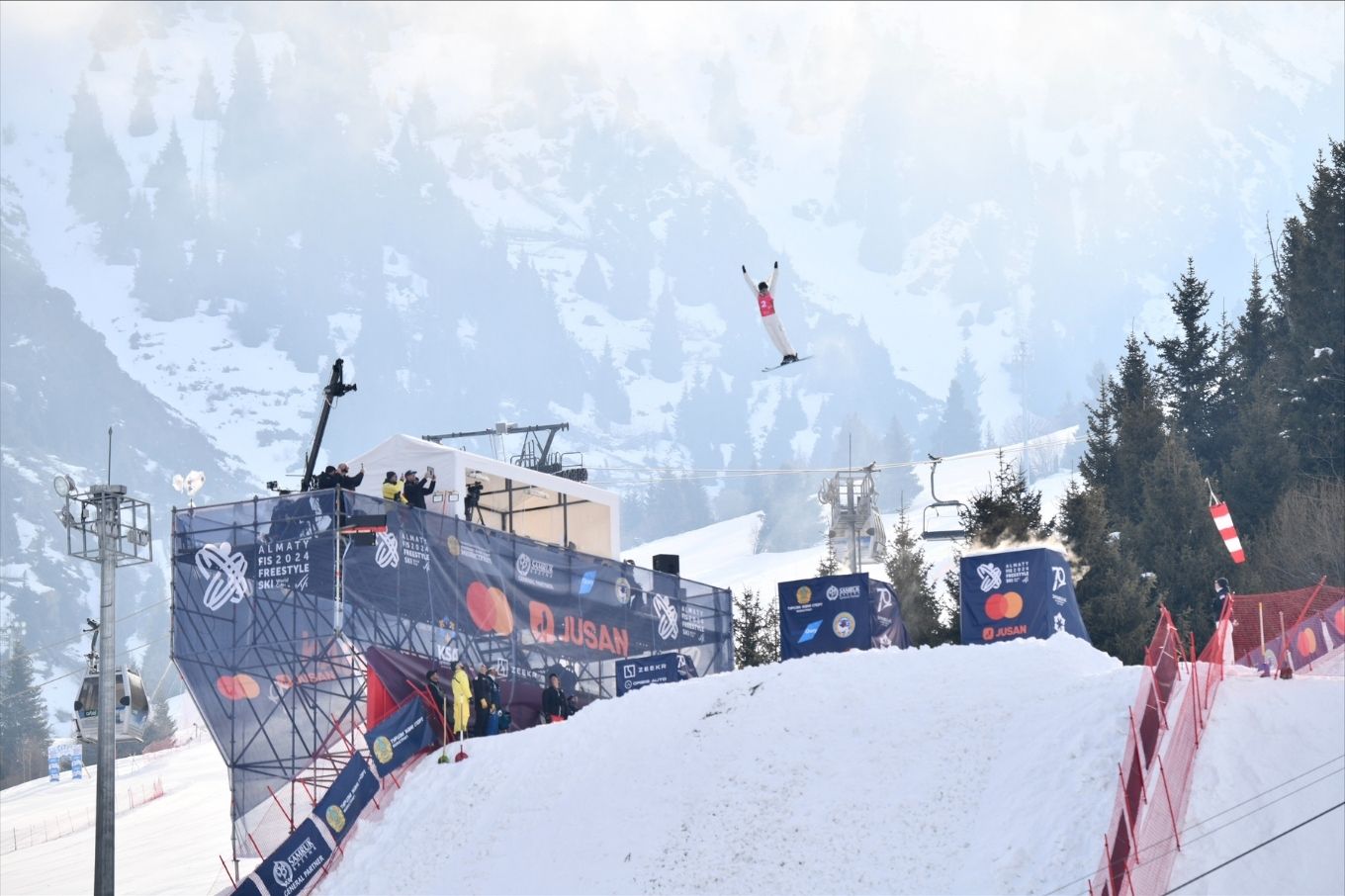Snowmaking saves the day
Snowmaking expansion is the best thing to happen in Aussie skiing & boarding in Australasia over the past 20 years. It’s not “artificial”. it’s not cheap. it can’t always be made. But it sure helps, especially in a late season like 2015 as Owain Price reports.
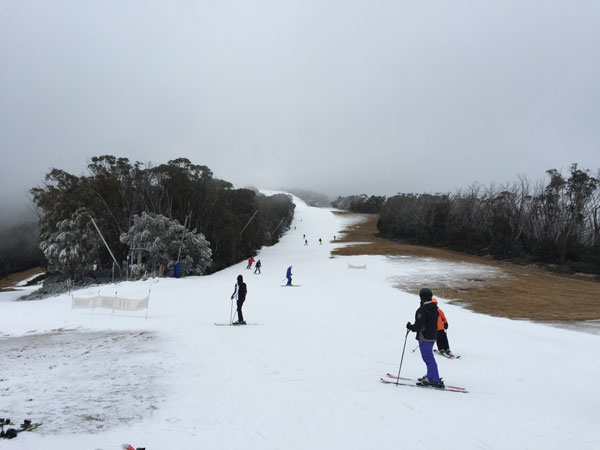
The run half full beats the run fully empty © Owain Price
With typical bad timing we caught the days before the dumps locally, lucking out at Buller at the end of June, and Perisher the following week.
But at Buller at least we got to stretch the legs on Little Buller Spur, and I got beaten up by a box feature in the park (despite the best efforts of an excellent instructor to teach an old dog new tricks). Neither option would have been possible without their potent snowmaking, further expansion only limited for the moment by water supply issues.
At Perisher school holiday crowds were keeping Front Valley busy, and the longest run option there, from mid-station on the quad, was a bit too much of a wait for us on a day trip mission. So we scooted over to Mt Perisher, which offered a bearable 10 minute lift wait when we got there late morning, that then thinned out early afternoon to virtually ski straight on laps. It’s not the easiest terrain to make and maintain snow on, with lots of big boulders, but there was plenty of cover down the middle, and enough that had blown off the sides for variety. Some decent airs were available if you were up for it, like young American Chris Shannis. He was sleeping in his car around Jindabyne while waiting for his season job as a dish pig at Sponars Chalet to start – the lack of early snow had delayed both the job and the accomodation that came with it. Undeterred, he was getting stuck in daily at Perisher, determined to maximise his season pass, mostly in the park or on Mt Perisher.
Despite the often relentless negative vibe about snowmaking (somebody give us a dollar for every time they wheel out “only snowmaking” or “aritficial snow only”) the general vibe on the lifts and slopes was all positive, despite the limited offerings.
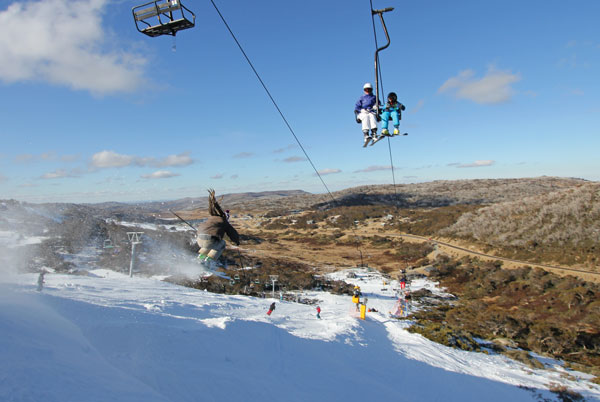
© Owain Price
“We were here the same week last year and there was heaps of snow, but I’ve actually got more skiing in this week” a schoolteacher on the triple chair told me. “Last year it was a blizzard, the chairs were mostly on wind hold, and there were lift-lines on the t-bars all day.”
She had had a goood week, and my mate and I were having a good day on our quick day trip scoot down from Canberra. The most simple measure of any ski day is if you get enough skiing in to get buggered, and we had no problems on that score, heading home late afternoon tired but happy after 15 or so laps of Mt P.
A few years back and a similar late start to the season would have been far worse, with just Front Valley to ski on. Total reliance on snowmaking, like early last season, is the most obvious benefit, but it’s the constant top up that’s less obvious but ongoing that keeps conditions much better for much more of the season these days that is the larger pay off from the resort’s massive investments.
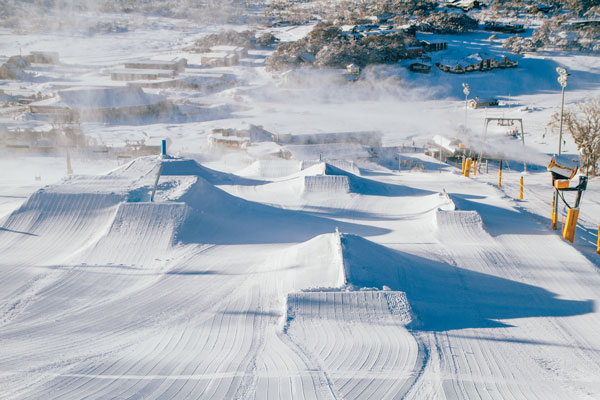
© Perisher
We asked Perisher snowmaking Manager John Palmer for the lowdown.
How many snowguns total now ?
66 Fan snowmakers, 132 Lance snowmakers, Various Manual Air/Water snowguns, 100 manual hydrants
What’s the total area covered and the key zones within that?
Total resort area covered is now 53.4 ha.
What’s the difference between the tall skinny guns and those big fat blower jobs?
We have 3 types of snowmakers. The ‘Big Fat Blower Jobs’ are fan guns; a large fan is used to create an air stream, that water is added too, to create snow.
Lance, or tower guns, are a set of nozzles on a lance 6-9 m above ground to spray fine droplets of water into the cold air, so they need colder temperatures to operate.
G guns use compressed air as a propellant that water is mixed into. These guns work best in marginal temperatures, but are expensive to operate due to compressed air costs.
Thredbo’s efforts are Australia’s most worthy, as they invariably manage to keep the place top-to-bottom, despite the last 200m or so vertical being below the normal snow line.
The first year they announced they could do that 30 years or so ago we went up for opening weekend, all excited, only to find a thin cover that soon became as much or more grass and mud than snow down the middle of Crackenback, with a bit more of the white stuff if you stuck right on the edges. That was mid-80s, but there’s no comparison today. Few people have had a better view of Thredbo’s snowmaking improvements than Ian Foster, who has managed the landmark Lantern Apartments for over 25 years, with a panoramic view of the whole mountain.
“Look, we thought the snow making in the 1990’s was amazing. I remember 1993 was very short on snow but we still had good skiing. Thinking back now though, I used to spend a lot of time dodging death cookies or hitting a patch of super sticky man-made at speed, and on tele skis that means window washer arms while you slide at 80k’s plus on your tip toes.”
“Now with the automation and hi tech snow guns, the snow is premium and the cover they produce is astounding. In fact we actually love the El Niño Seasons now because even though there aren’t huge snowfalls, there is usually enough natural snow, plenty of cold clear nights for snow making, and lots of sunny days for loving life. Snow making has definitely taken the lumps out of Australian skiing.”
Mt Hotham are the big movers on the snowmaking scene in Oz this year, seriously stepping things up on key areas including the Summit, lower Canyon and lower Imagine. – see full story on that here.
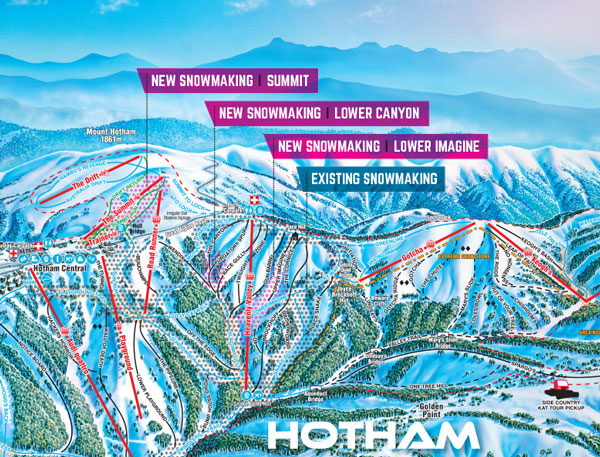
Detail of new snowmaking areas at Hotham
In New Zealand they actually used to mock Australian resorts’ snowmaking efforts in a late-1980s, with a “Mountains not Mole-hills” campaign, that featured a graphic of a snow cannon plopping out snow balls on the supposed little Aussie mole-hill vs lots of natural snow on the Kiwi mountains. That bit them in the bum with a bad season there and a good one in Australia, with Queenstown in particular suffering as Coronet Peak remained the mound of tussock grass it actually is – the top altitude is only 1649m. So they learned their lesson and got busy installing excellent snowmaking systems, with Coronet’s the most impressive as it allows top-to-bottom skiing on most of the main trails most of the season. Precisely because it’s mostly tussock, not loose rock, you can ski more with a lot less natural snow there than at The Remarkables opposite.
Mt Hutt, Treble Cone and Cardrona also have excellent snowmaking, so if you do get unlucky with natural snowfall you won’t miss out entirely.
The truth is very few places in the world can now confidently run all season on natural snowfall alone, so stop complaining and embrace it.
All those internet snow forecast sites and webcams have made us all too choosy – if there’s snow, period, just go.
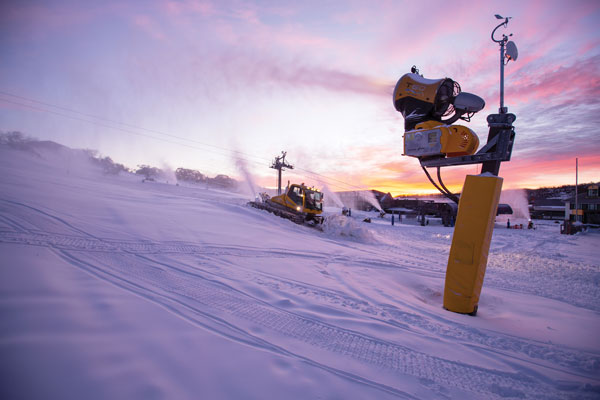
© Perisher

